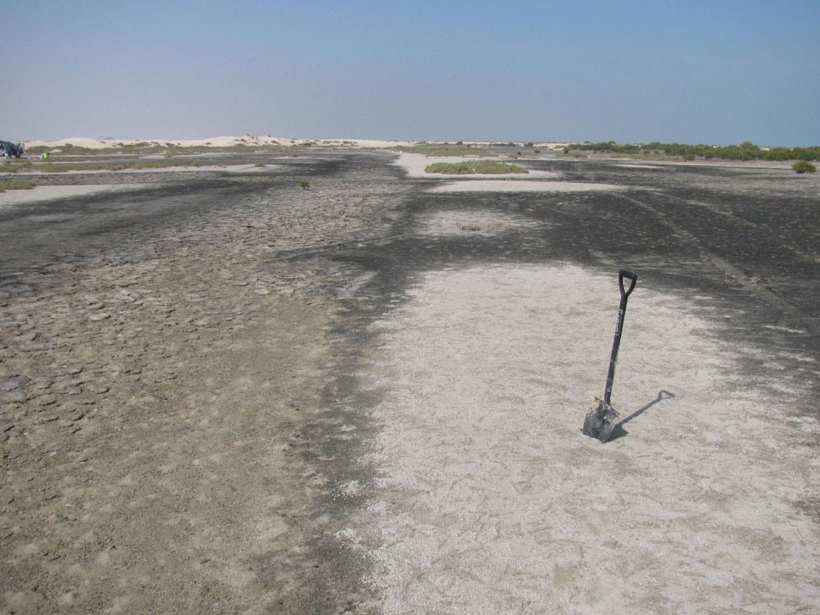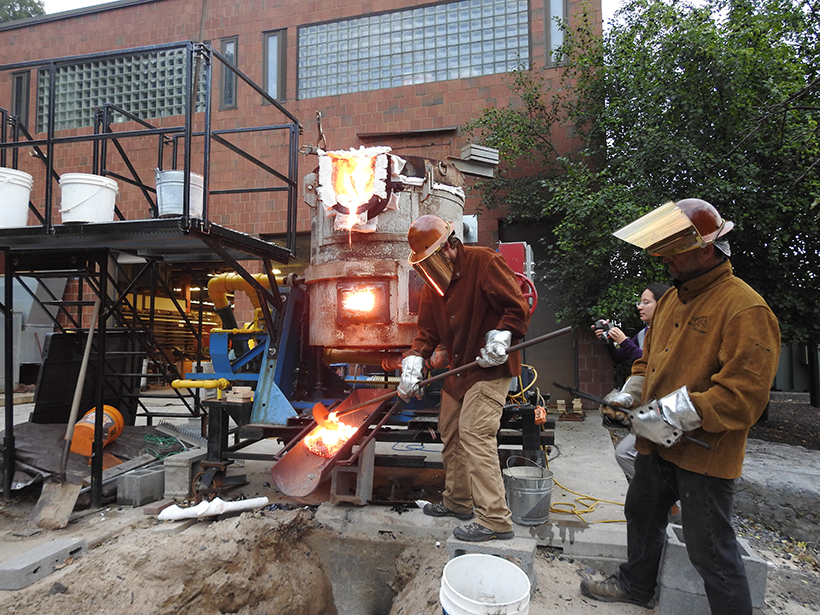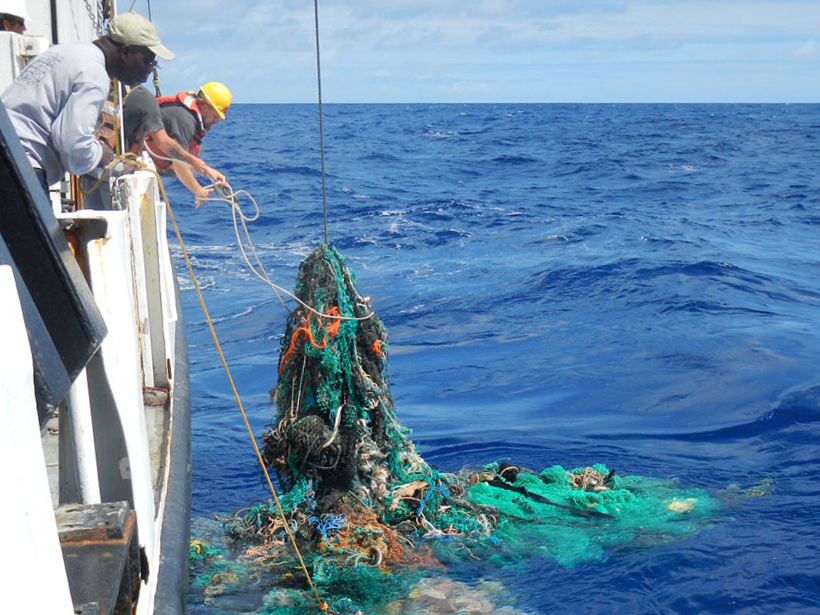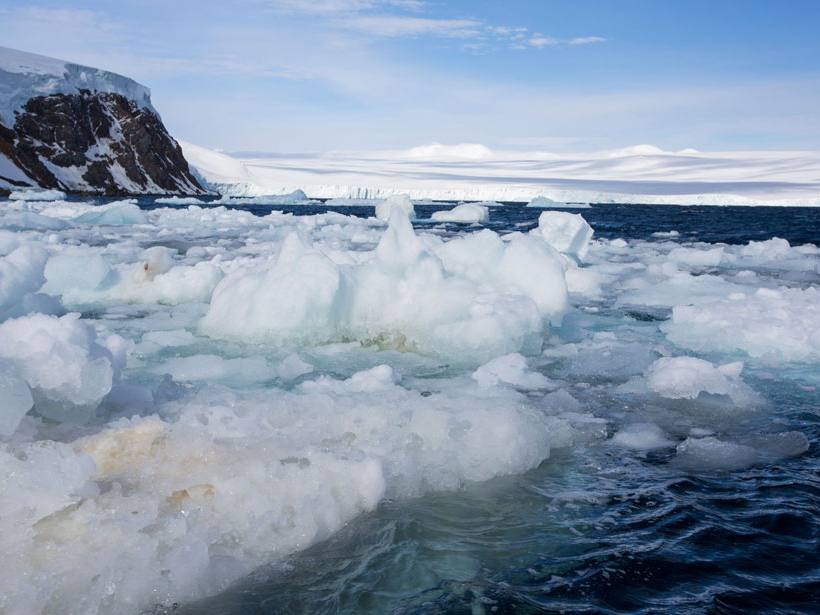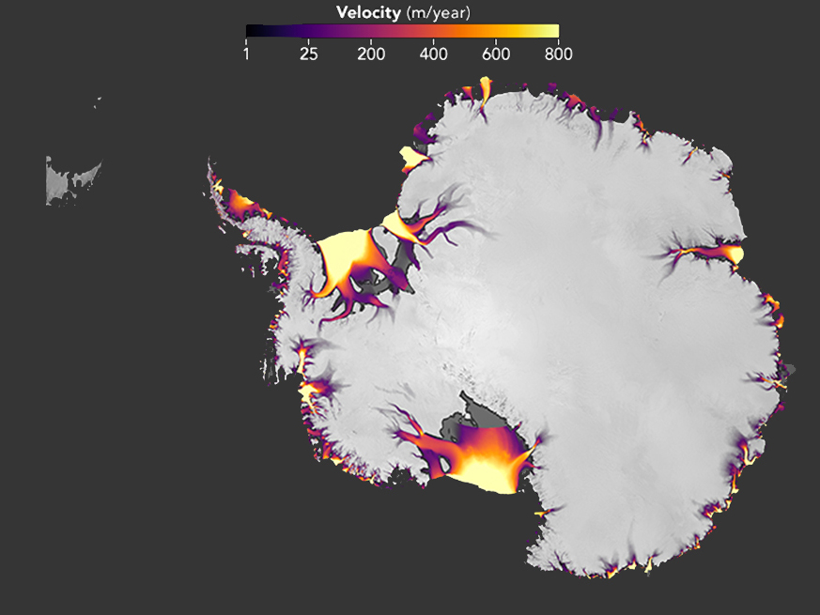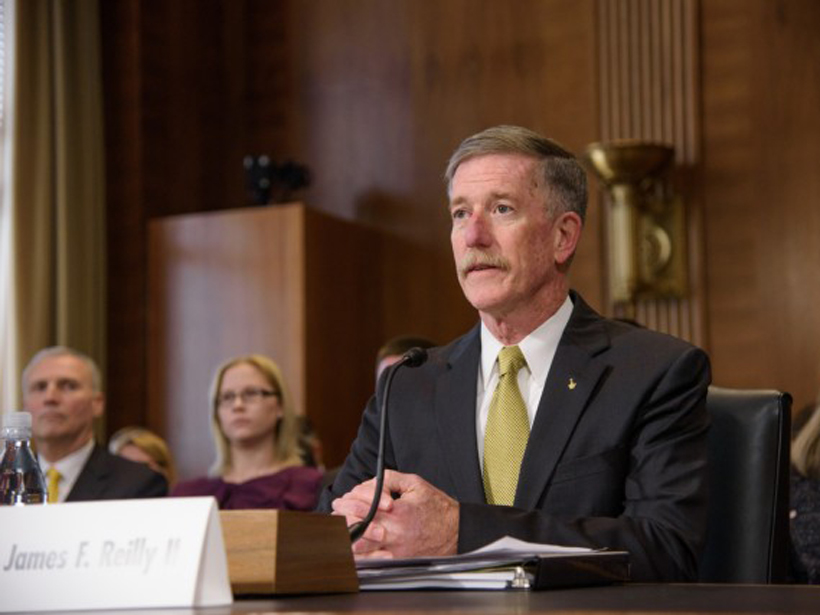Viruses might have helped transform dense bacterial colonies into a type of sedimentary rock that is frequently associated with underground oil reserves.
News
Homemade “Spatter Bombs” Can Reveal Volcanic Secrets
Researchers use trial and error to develop a technique to create volcanic lava bombs.
Pacific’s Garbage Hot Spot Holds More Plastic Debris Than Was Thought
A nonprofit that helped to collect data for the research plans to use the study’s findings to help guide it in an upcoming campaign to remove buoyant plastic trash from ocean gyres.
Stanley “Stan” Ruttenberg (1926–2017)
This talented geophysicist, with his love of music, played key roles in the International Geophysical Year (1957–1958) and many other research programs, as well as in organizing a major music festival.
Rocks with Soft-Tissue Fossils Share a Mineral Fingerprint
Discovering new resting places of these rare and information-rich fossils will be critical to understanding the largest expansion of life in Earth’s history, according to researchers.
Alaska Spotlights Its Health Risks from Climate Change
In the only Arctic state in the United States, Alaskans have already been affected by health repercussions of warming. More and worse lie ahead, a new state health report says.
Nutrient-Rich Water Around Seamounts Lures Top Predators
At an Indian Ocean marine refuge, tides drive cold water laden with nutrients onto the tops of underwater mountains, where it sustains a long food chain that culminates in sharks, tuna, and seabirds.
U.S. Scientists Safely Retrieved from Ice-Bound Antarctic Island
Argentineans came to the aid of stranded scientists.
New Maps Highlight Antarctica’s Flowing Ice
The maps focus on surface ice velocity, showing how Antarctica’s frozen surface changed over a 7-year period.
USGS Nominee Calls Scientific Integrity a High Priority
James Reilly, a former astronaut and petroleum geologist, told senators that resolving USGS budget challenges and maintaining the agency’s core mission are other top priorities.

